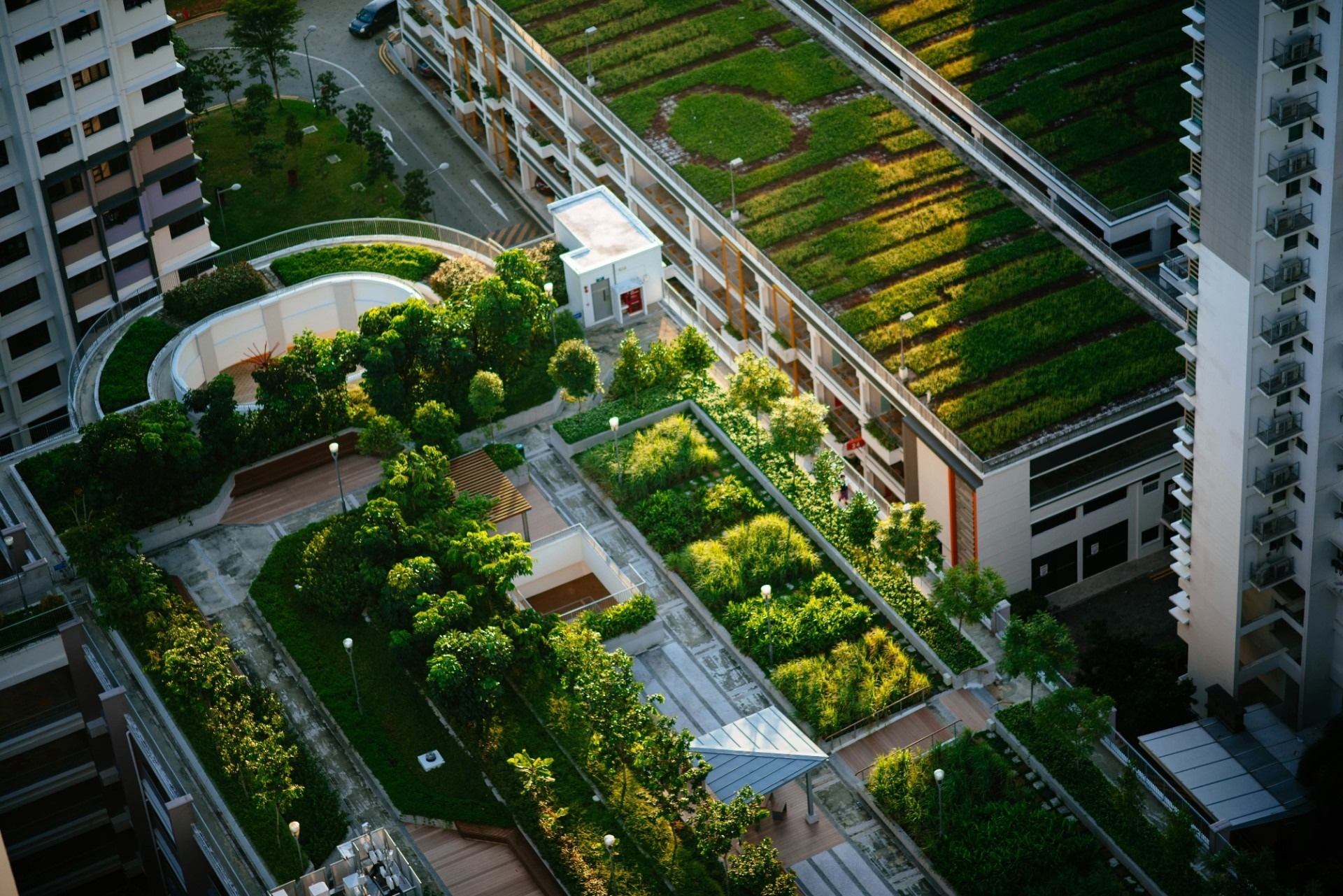According to a new study, extensive vegetation coverage on building rooftops might significantly lower temperatures at the city scale and save energy expenditures.
 The study is the first to analyze the transformative effect of green roofs on urban-scale energy consumption and climate conditions. Image Credit: Unsplash
The study is the first to analyze the transformative effect of green roofs on urban-scale energy consumption and climate conditions. Image Credit: Unsplash
The study, which was co-authored by UNSW Sydney Scientia Professor Mattheos (Mat) Santamouris and directed by Indira Adilkhanova and Professor Geun Young Yun from Kyung Hee University, found that when fully covered, green roofs could reduce the energy required for cooling by nearly 8% and cool South Korea’s capital city by about 1 °C in the summer.
The study, which was published in Nature Cities, is the first to examine how green roofs affect urban energy consumption and climate conditions. It could also act as a model for modeling the potential of these structures in other cities throughout the globe.
Previously, we have only looked at the energy impact of green roofs for singular buildings, but now this is the first study to evaluate the real climatic and energy impacts of green roofs at the city scale. Our findings demonstrate the tremendous potential of green roofs to substantially decrease the peak temperature of a city and increase energy savings.
Mattheos Santamouris, Professor, High Performance Architecture, University of New South Wale
Professor Santamouris is an expert in creating methods and technology for mitigating heat in metropolitan areas experiencing overheating. One such metropolis where climate change and increased urbanization have an influence on the severity of overheating concerns, increasing the demand for energy consumption and negatively affecting health, is Seoul, South Korea.
“One of the major problems in the built environment worldwide is severe urban overheating. And as our cities heat up, thermal discomfort and heat-related illness and death also rise,” Santamouris added.
One possible tactic to reduce urban heat and energy use is the installation of green roofs. They are a scalable, naturally occurring way to deal with the problems caused by urban heat that can be added to new construction or retrofitted into existing structures.
Impact of Green Roofs at the City-Scale
To assess the potential of green roofs to reduce Seoul’s temperature and cooling requirements in August, the study’s research team conducted extensive cooling climatic and building energy simulations under three different scenarios of greenery covering. They concentrated especially on vast, non-irrigated green roofs, which are a lightweight form of green roof that can be implemented widely and requires less upkeep.
According to the modeling, there is a substantial correlation between the coverage of green roof systems and the reduction in both energy consumption and temperature. The air and surface temperatures of the city dropped by up to 0.54 °C and 2.17 °C, respectively, when 90% of the structures had green roofs. In the meanwhile, the energy consumption of buildings decreased by almost 7.7% (0.64 kWh/m2).
Santamouris stated, “Green roofs help cool temperatures by facilitating evaporation through plant transpiration, which cools the surrounding air and reduces the need for mechanical cooling systems (air conditioning), lowering the overall energy demand. Additionally, the layer of soil and vegetation on green roofs provides insulation, reducing heat transfer into buildings and further lowering energy costs.”
Seoul now has a small percentage of green roofs, but depending on local regulations, that percentage should rise to between 30 and 60% over the course of the next few decades. However, Prof. Santamouris claims that with the correct incentives, coverage of 90%—the maximum possible concentration of green roofs—could be accomplished.
Santamouris further added, “Green roofs are one of the more expensive heat mitigation technologies with initial capital costs and ongoing maintenance, so it is not always suitable. But for cities and businesses in developed countries that can afford it, green roofs are an important social contribution that policymakers can create the conditions to encourage widespread adoption.”
According to Prof. Santamouris, climate conditions have an effect on the effectiveness of green roofs and should be taken into account during the design and installation process. To properly represent the long-term energy-saving and yearly cooling potential of green roof systems, a more thorough study is also required.
Santamouris noted, “The performance of green roofs is very much affected by several parameters, mainly humidity, precipitation, solar radiation, and temperature. But green roofs also have important climatic benefits as well as many other important benefits, such as absorbing rainwater, increasing biodiversity and improving the aesthetic quality of the city.”
Prof. Santamouris cautions that there would be dire repercussions if urban heat mitigation techniques like green roofs are not used. By 2050, nighttime temperatures in cities could increase by as much as 5 °C if present trends continue. The cost of power for cooling could be prohibitive for many people, even in wealthy countries, and the number of diseases and fatalities caused by the heat will sharply increase.
Santamouris concluded, “There is an urgent need to implement a combination of heat mitigation techniques and technologies in our cities to decrease urban temperatures. If we do not, the cost in the coming decades will be catastrophic, not just for the economy, but on quality of life, particularly for low-income populations who will suffer the most.”
Journal Reference:
Adilkhanova, I., et. al. (2024) Green roofs save energy in cities and fight regional climate change. Nature Cities. doi:10.1038/s44284-024-00035-7